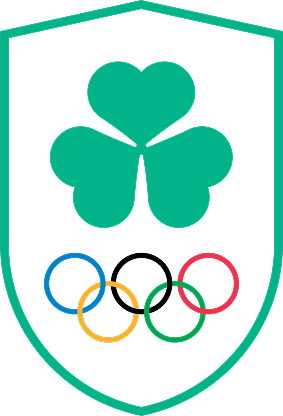National Federation
Irish Table Tennis Association
Irish Sports HQ
National Sports Campus
Blanchardstown
Dublin 15
Tel: (+353 1) 625 1135
Fax: (+353 1) 625 1136
Email: [email protected]
Web: http://www.irishtabletennis.com/itta/
Olympic History
Table tennis became an Olympic sport in Seoul in 1988, without ever being a demonstration sport. Since 1988, China has won 16 of the 20 gold medals awarded, including all five in both the women’s singles and the men’s doubles.
Perhaps the greatest Olympic player has been Deng Yaping who won each of the women’s singles and women’s doubles twice. Her doubles partner, Qiao Hong, finished second in one of those singles titles and third in the other.
At the Beijing 2008 Olympic Games a team event will replace the doubles event for both men and women.
Technical Details
In the Olympic Games, Table Tennis includes four disciplines: men’s singles, women’s singles, men’s team event and women’s team event.
According to the game structure of the Olympic Tournament, athletes will compete against each other according to the knockout system. Each match consists of seven sets maximum. The athlete who wins four sets first is the game’s winner.
A Good Service
Service starts with the ball resting on the open palm of the server’s stationary free hand; the server throws the ball vertically upwards. As the ball is falling, the server strikes it so that it touches first his or her court and then, after passing over or around the net assembly, touches the receiver’s court. In doubles, the ball must touch the right half court of the server and the receiver.
From the start of the service, until the ball is struck by the server’s racket, the ball must be visible to the opponent and not hidden by any part of the player’s body, or their clothing or their doubles partner; in addition, the ball must be above the level of the playing surface and behind the server’s end line.
It is the responsibility of the player to serve in such a way, so that the umpire or the assistant umpire can verify compliance with the requirements of a good service. Otherwise, there are penalties imposed, like the receiver being awarded the point.
A Good Return
The ball, after having been served or returned, is struck by the player so that it passes over or around the net assembly and touches the opponent’s court, either directly or after touching the net assembly.
Rules
Match
There are different match systems, such as matches with five, seven or nine sets. The winner of the match is the player who wins most sets, depending on the system used, e.g. four out of seven games.
Set
The player, or the pair, scoring 11 points first, wins a set. In the event either players or pairs reach 10 points, the winner is the player or pair that gains a lead of two points.
Point
An athlete scores a point:
· If the opponent fails to make a good service
· If the opponent fails to make a good return
· If the opponents makes a return and the ball touches the net assembly
· If the ball passes beyond the end line without touching his court, after being struck by the opponent
· If the opponent obstructs the ball
· If the opponent strikes the ball twice successively
· If the opponent strikes the ball with a side of the racket blade whose surface does not comply with regulations
· If the opponent, or anything the opponent wears or carries, moves the playing surface (meaning the surface on which the game is played: table, net assembly etc.)
· If the opponent, or anything the opponent wears or carries, touches the net assembly
· If the opponent’s free hand touches the playing surface
· As provided by the Expedite System
The Expedite System
The expedite system is introduced if a set has not finished after a play of 10 minutes or at any earlier time at the request of both players or pairs. An exception is made in the instance where both players or pairs have scored at least nine points, at which case the expedite system can not be introduced.
If the 10-minute time period lapses while the ball is in play, the umpire interrupts the play by calling ‘time’. The match resumes with service by the player who served in the rally that was interrupted. Otherwise, if at the lapse of 10 minutes the ball is not in play, play shall resume with service by the player who received in the preceding rally.
Under the expedite system, each player makes a service. If the receiving player or pair makes 13 good returns, the receiver shall score a point. Once introduced, the expedite system remains in operation until the end of the match.
Techniques
Two major techniques have been developed in Table Tennis and they are related to the way the player grips the racket:
Asian grip (or ‘penholder’)
From the very definition, it is easy to grasp what the Asian type grip is, meaning that it is held the same way we grip a pen when writing.
There are two variations, which are related to the positioning of the fingers on the handle: the Chinese and the Japanese grip. The Asian grip technique is the main grip used by players from the Far East, although many athletes all over the word use it as well.
European grip
Players grip the racket by the handle as in Tennis or rackets. Depending on the way they play their game, players are separated into two major categories: offensive and defensive, each one having its own subcategories.
